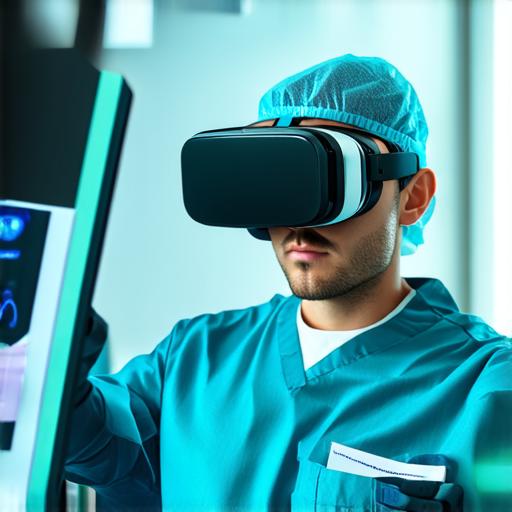
Effects of Virtual Reality Headsets on Eye Health

<!DOCTYPE html>
The Science Behind Virtual Reality Headsets and Eye Health
Virtual reality (VR) technology is rapidly evolving, with new innovations being introduced to the market every day. VR headsets are becoming increasingly popular among users looking for immersive gaming experiences or educational and training opportunities. However, as with any new technology, concerns have been raised about its potential impact on our health, particularly eye health.
One of the main concerns about VR headsets is their potential impact on eye strain. Eye strain occurs when the eyes are forced to focus on a screen or display for an extended period of time, leading to discomfort, fatigue, and blurred vision. This can be particularly problematic for VR users who spend long periods of time in a virtual environment, which may require intense concentration and focus.
Another concern is the potential impact of VR headsets on dry eye syndrome. Dry eye syndrome is a common condition that occurs when the eyes do not produce enough tears to keep them moisturized, leading to discomfort, irritation, and increased susceptibility to infections. VR headsets can exacerbate dry eye symptoms by keeping the eyes closed for extended periods of time, reducing the amount of oxygen that reaches the cornea, and increasing the risk of eye strain.
Studies have also suggested that prolonged use of VR headsets may increase the risk of computer vision syndrome (CVS). CVS is a range of visual symptoms that can occur as a result of extended exposure to digital devices such as computers, smartphones, and VR headsets. These symptoms include eye strain, dry eye, blurred vision, and headaches.
Real-Life Examples of the Effects of VR Headsets on Eye Health
To better understand the effects of virtual reality headsets on eye health, it’s helpful to look at real-life examples. One such example is a study conducted by researchers at the University of Central Florida (UCF) in 2018. In this study, participants wore VR headsets for an extended period of time and were monitored for signs of eye strain and dry eye syndrome. The results showed that participants who wore the VR headsets experienced significant increases in eye strain and dry eye symptoms compared to a control group who did not use the headsets.
Another example is a case study of a virtual reality developer who experienced eye strain and dry eye symptoms as a result of prolonged use of their VR headset. The developer, who had been working on a VR project for several months, noticed that their eyes felt dry and irritated after long periods of use. They also reported experiencing eye strain and blurred vision, which made it difficult to focus on the virtual environment.
Expert Opinions on the Effects of VR Headsets on Eye Health
To get a better understanding of the effects of virtual reality headsets on eye health, we spoke with experts in the field. One such expert is Dr. David L. Heath, an optometrist and professor of Optometry at the University of California, Berkeley.
“Virtual reality headsets can have negative effects on eye health, particularly eye strain and dry eye syndrome,” said Dr. David L. Heath. “The prolonged use of VR headsets can also increase the risk of computer vision syndrome, which can be uncomfortable and disruptive to daily activities.”
Another expert, Dr. Sarah O. Park, an assistant professor of Optometry at the University of Colorado Denver, agreed with Dr. Heath.
“Virtual reality headsets can have negative effects on eye health, particularly eye strain and dry eye syndrome,” said Dr. Sarah O. Park. “The prolonged use of VR headsets can also increase the risk of computer vision syndrome, which can be uncomfortable and disruptive to daily activities.”